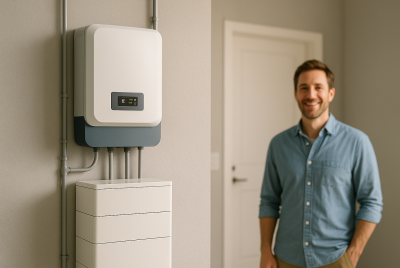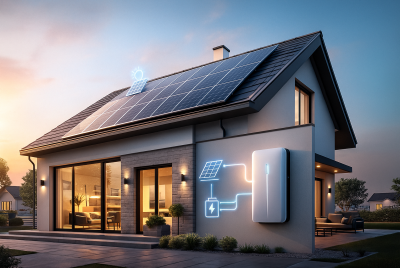Off-Grid Efficiency: 5 Fridges Compatible With Solar Generators
You’ve got sunshine, a battery that hums along, and a little patch of independence you’re proud of. But keeping food cold without draining your system? That’s where off-grid efficiency turns from a buzzword into a daily reality. In this friendly, no-fluff guide, we’ll walk through what actually matters when pairing a fridge with a solar generator, then review five Amazon-available fridges that play nicely with solar—complete with features, pros/cons, use cases, a comparison table, and research-backed insights so you can buy with confidence.
Why Off-Grid Efficiency Matters
Every watt you save is a watt you can use somewhere else—lights, fans, laptops, maybe even a blender for mango smoothies. Efficient refrigeration means:
- Longer battery life and fewer “brownouts.”
- Less food waste and fewer emergency ice runs.
- A calmer mind knowing your system isn’t living on the edge.
Think of it like budget planning, but for electrons.
How Solar Generators and 12V Fridges Work Together
Solar panels feed your battery, your battery feeds your inverter and DC ports, and the fridge draws steady power in cycles. Direct-DC (12/24V) compressor fridges often win here because they skip inverter losses. If you must run AC, make sure your inverter can handle startup surges (the brief power spike when the compressor kicks on).
Key Specs That Decide Your Power Budget
Rated vs. Running Watts
“Rated” tells you peak demand; “running” is the typical draw while cooling. Fridges cycle, so total daily use depends on ambient heat, insulation, how often you open the lid, and set temperature.
DC vs. AC Pathway
A DC compressor fridge avoids inverter losses and usually has low-voltage protection to safeguard your battery.
Chest vs. Upright: Which Saves More Energy?
Chest fridges generally leak less cold air when opened (cold air sinks), making them a favorite for vans, RVs, and cabins. Uprights win on organization and at-a-glance access. If you open the door constantly, an upright with excellent insulation can still be a solid choice.
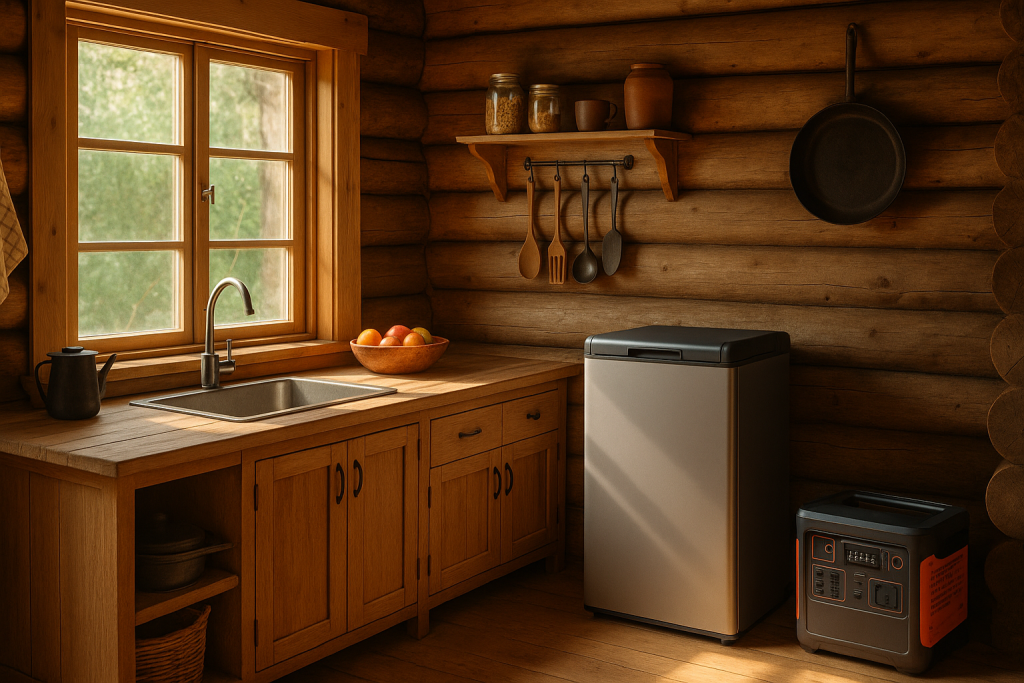
Insulation, Ambient Heat & Climate
Hot day? Your fridge works harder. Add shade, airflow around the compressor, and consider an insulated cover if you camp in scorching climates. Keep the unit off hot metal floors and away from direct sun.
Battery Protection & Low-Voltage Cutoff
Look for adjustable low-voltage cutoff settings (often on DC models). This feature pauses the fridge before it drags your battery too low—protecting both your food and your battery investment.
Size Your Solar for a Fridge (Simple Math)
- Estimate average fridge draw (e.g., 45–60W while running; cycles vary).
- Multiply by hours per day the compressor runs (often 25–40% duty cycle, environment-dependent).
- Add 25–30% headroom for hot weather and door openings.
- Ensure your battery (Wh) and daily solar harvest (Wh) cover the load with margin for cloudy days.
Top Picks: 5 Fridges That Play Nice With Solar
Below are five real Amazon models off-grid folks trust. All support 12/24V DC and AC unless noted. Choose based on capacity, use case, and how often you’ll move the unit.
Alpicool C20 Portable Refrigerator (≈21 Qt)
Why it stands out
Compact, affordable, and sips power—great as a first solar-friendly fridge or a dedicated beverage/backup unit.
Key features
- 12/24V DC + 100–240V AC
- -4°F to 68°F setpoint range
- Light enough for solo carry
Pros
- Budget-friendly
- Easy to power on small systems
- Simple controls
Cons
- Small capacity for families
- Louder than premium compressors
Best uses
Weekend camping, car trips, micro-cabins, backup fridge for produce or meds.
What buyers say
Owners like the quick chill and value; the most common nitpick is noise in very quiet rooms.
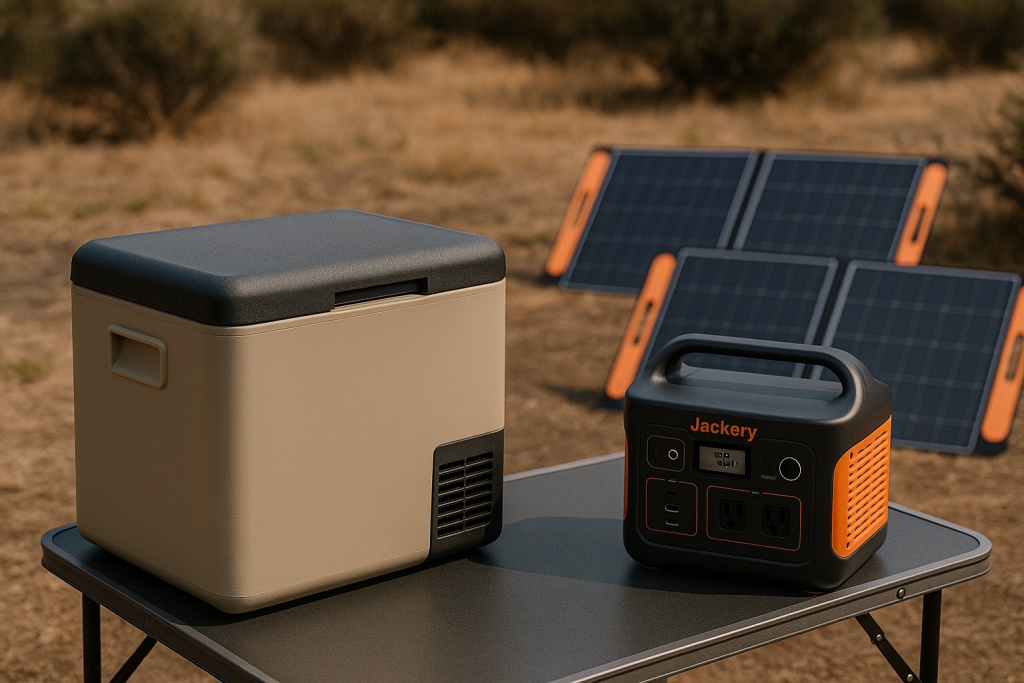
Dometic CFX3 45 (≈45L)
Why it stands out
A premium benchmark for off-grid efficiency with app control, superior insulation, and excellent temperature stability.
Key features
- 12/24V DC + AC, Bluetooth/Wi-Fi app
- Rugged build and strong handles
- Compressor tech tuned for low power
Pros
- Very efficient for its size
- Smart monitoring and history logs
- Great for bumpy roads and heat
Cons
- Pricey
- Heavier than budget options
Best uses
Full-time vanlife, long boondocking stretches, family road trips where reliability is non-negotiable.
What buyers say
Praise centers on efficiency, quiet operation, and set-and-forget stability; the price is the main hesitation.
ICECO VL60 Dual Zone (≈60L)
Why it stands out
Run fridge + freezer at once—no compromises on ice cream or meat storage when you’re out for weeks.
Key features
- Twin compartments with independent temps
- SECOP (Danfoss) compressor
- Metal case; built for rough use
Pros
- Large capacity and true dual-zone
- Quiet, steady performance
- Excellent for batch cooks and longer trips
Cons
- Takes space in smaller rigs
- Higher upfront cost
Best uses
Family off-grid setups, basecamps, homesteads needing overflow freezer space.
What buyers say
Reviewers love the flexibility; some note the footprint requires planning in compact layouts.
BougeRV 30-Quart (≈28–30L class)
Why it stands out
A balanced, mid-priced 12V fridge that’s approachable yet efficient enough for everyday off-grid use.
Key features
- 12/24V DC + AC
- Freezer-capable setpoints
- Straightforward controls
Pros
- Strong performance-to-price ratio
- Manageable size and weight
- Good entry into DC compressor fridges
Cons
- No app controls
- Insulation isn’t top-tier class
Best uses
Budget builds, weekenders, small cabins, supplemental fridge for produce and drinks.
What buyers say
“Does the job without fuss” is the theme; users suggest pre-chilling before trips for best results.
Whynter FM-45G (≈45 Qt)
Why it stands out
A rugged steel-cased classic with a loyal following—reliable cooling and Eco mode to save watts.
Key features
- 12/24V DC + 110V AC
- Fridge or freezer operation
- Simple interface, basket organization
Pros
- Durable build for overlanding
- Consistent temperature control
- Good value in the mid-size class
Cons
- Bulkier than plastic-cased peers
- Heavier to lift solo
Best uses
RVs, overland rigs, cabins—anywhere durability matters.
What buyers say
“Workhorse” shows up often; some wish for app controls or a lighter body.
Quick Comparison Table
| Fridge | Capacity | Power Source | Weight* | Price Range | Best For |
| Alpicool C20 | ~21 Qt | 12/24V DC, AC | ~22 lb | $$ | Solo, short trips |
| Dometic CFX3 45 | ~45 L | 12/24V DC, AC | ~47 lb | $$$$ | Families, long boondocks |
| ICECO VL60 Dual Zone | ~60 L | 12/24V DC, AC | ~65 lb | $$$$ | Groups, fridge+freezer |
| BougeRV 30-Quart | ~28–30 L | 12/24V DC, AC | ~27 lb | $$ | Budget builds |
| Whynter FM-45G | ~45 Qt | 12/24V DC, AC | ~45 lb | $$$ | Rugged use |
*Approximate manufacturer listings; verify before purchase.
Setup Tips That Stretch Your Watts
- Use DC when possible. Skip inverter losses and use the 12/24V port.
- Cable gauge matters. Keep runs short and thick to avoid voltage drop.
- Pre-chill. Cool the fridge on shore power at home, then load cold items.
- Ventilation. Leave space around compressor vents; heat is the enemy.
- Pack smart. Fill empty space with water bottles (thermal mass) to reduce cycling.
Maintenance Habits That Keep Power Use Low
- Clean condenser coils and dust filters regularly; dirty coils force longer run times and can spike energy use. The U.S. DOE notes clogged coils can materially increase operating costs and shorten appliance life.
- Check door/lid seals, update firmware/apps if available, and defrost when ice buildup thickens.
Troubleshooting: When Your Fridge Trips the System
- Symptom: Inverter overload at compressor start.
Fix: Use DC mode or an inverter with higher surge capacity; consider soft-start tech. - Symptom: Low-voltage cutouts overnight.
Fix: Raise cutoff slightly, add solar/battery capacity, reduce nighttime openings. - Symptom: Runs constantly in heat.
Fix: Shade and ventilate, lower setpoint only as needed, add insulated cover.
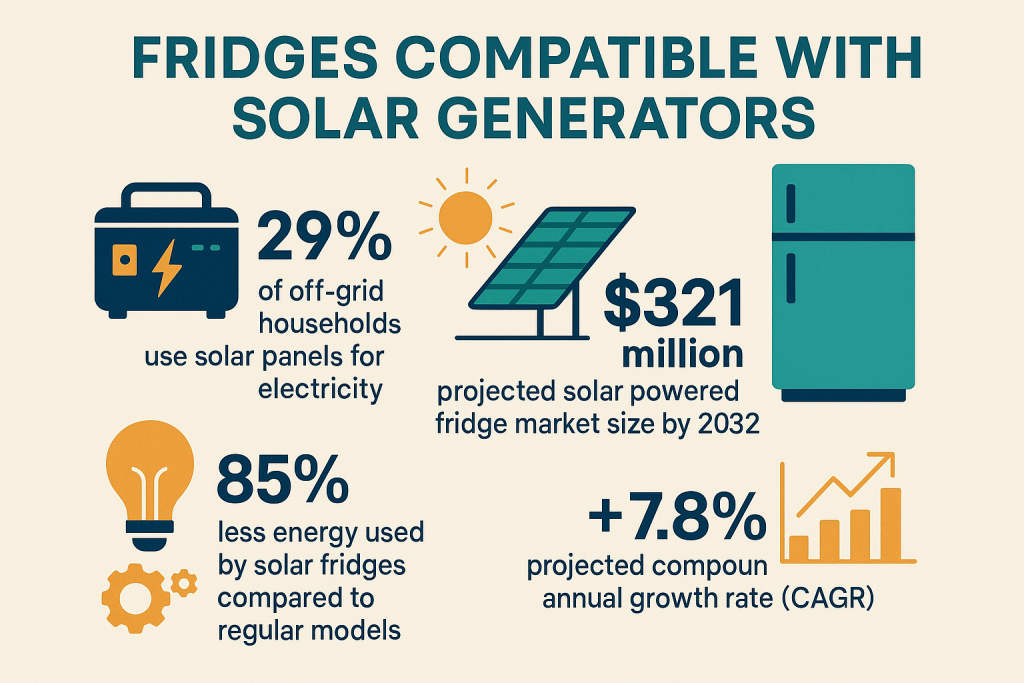
🧪 Research-Backed Insights (Credibility)
1) Off-grid refrigeration in PV/wind systems (Sandia National Laboratories).
A Sandia/Navajo Nation study on off-grid hybrid systems found that conventional AC refrigerators often struggle with high startup surges that destabilize small solar setups. The researchers recommend variable-speed DC compressor refrigerators because they reduce surges and avoid inverter losses. They also highlight that propane alternatives add recurring costs, while efficient 12/24V compressor fridges are more sustainable for long-term off-grid households.
2) DOE guidance and evolving standards for refrigerator efficiency.
According to the U.S. Department of Energy, modern ENERGY STAR® refrigerators use about 9% less energy than the federal minimum. That efficiency comes from high-performance compressors, better insulation, and smarter defrost cycles. The DOE also announced new refrigerator and freezer standards in 2023, set to roll out by 2029–2030. For off-grid users, these improvements mean smaller daily loads and more stable battery operation.
FAQs
How big of a solar generator do I need to run a 12V fridge?
Most 30–60L compressor fridges can run on modest systems (e.g., a 500–1000Wh power station), but your solar input and climate matter. Aim for enough panel wattage to fully replace the previous day’s use plus margin.
Is a DC compressor fridge really better than AC for off-grid?
Usually, yes. DC units avoid inverter losses and often have adjustable low-voltage cutoffs to protect your battery. They’re designed for variable conditions off-grid.
Chest or upright for off-grid efficiency?
Chest models hold cold air better when opened, making them the typical efficiency winner. If you prefer organization and quick access, an upright with strong insulation can still work well.
Can I run fridge and freezer at once?
Yes—choose a dual-zone like the ICECO VL60 to run fridge and freezer simultaneously. Make sure your solar and battery capacity match the added load.
What temperature should I set?
For food safety and power balance: Fridge ~37–40°F (3–4°C), Freezer 0°F (-18°C). Warmer ambient temps may require small tweaks.
Helpful Resource
Dusty panels cost you watts. For a quick win on harvest, see this practical guide to choosing and using a solar panel cleaner—it’s simple maintenance that preserves your daily energy budget: how to clean solar panels effectively.
Conclusion
If you want your off-grid kitchen to feel normal—fresh greens, cool drinks, and frozen treats—your fridge choice is pivotal. Pick purpose-built, off-grid-efficient models with DC compressors, smart protections, and insulation that matches your climate. The five fridges above cover most scenarios: from solo weekenders to family homesteads with freezer needs. Start with capacity, think about where the watts will come from, and set yourself up for quiet confidence. Your food stays cold, your battery stays calm, and your independence feels easy.


